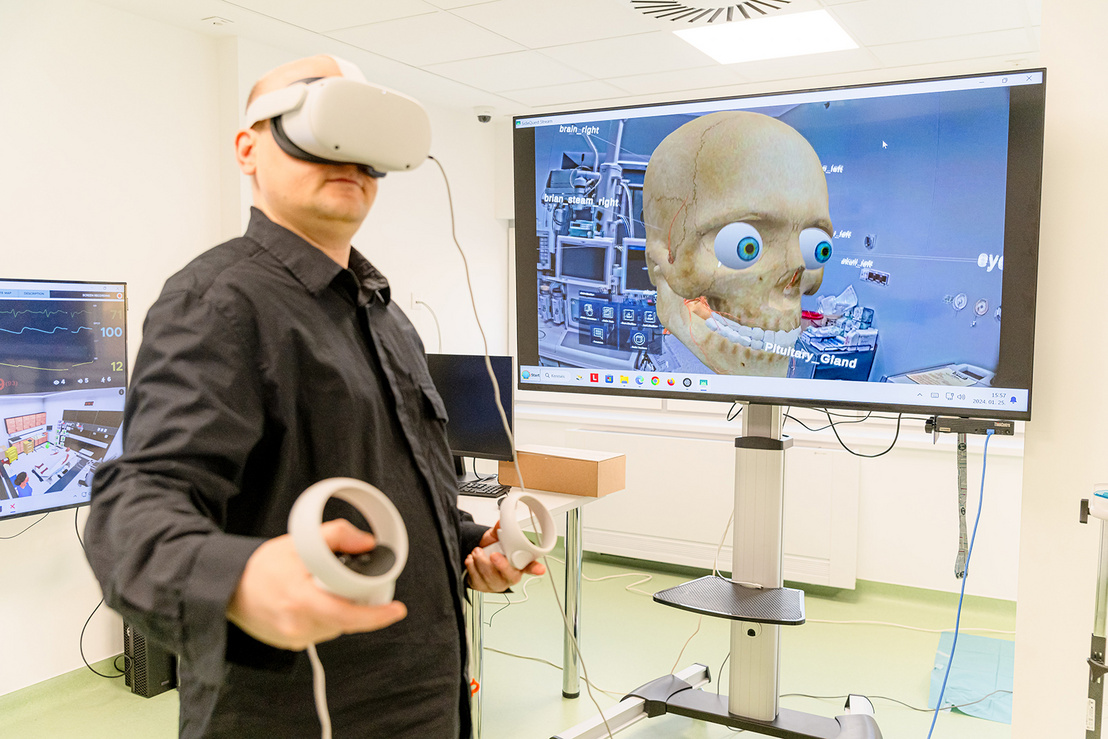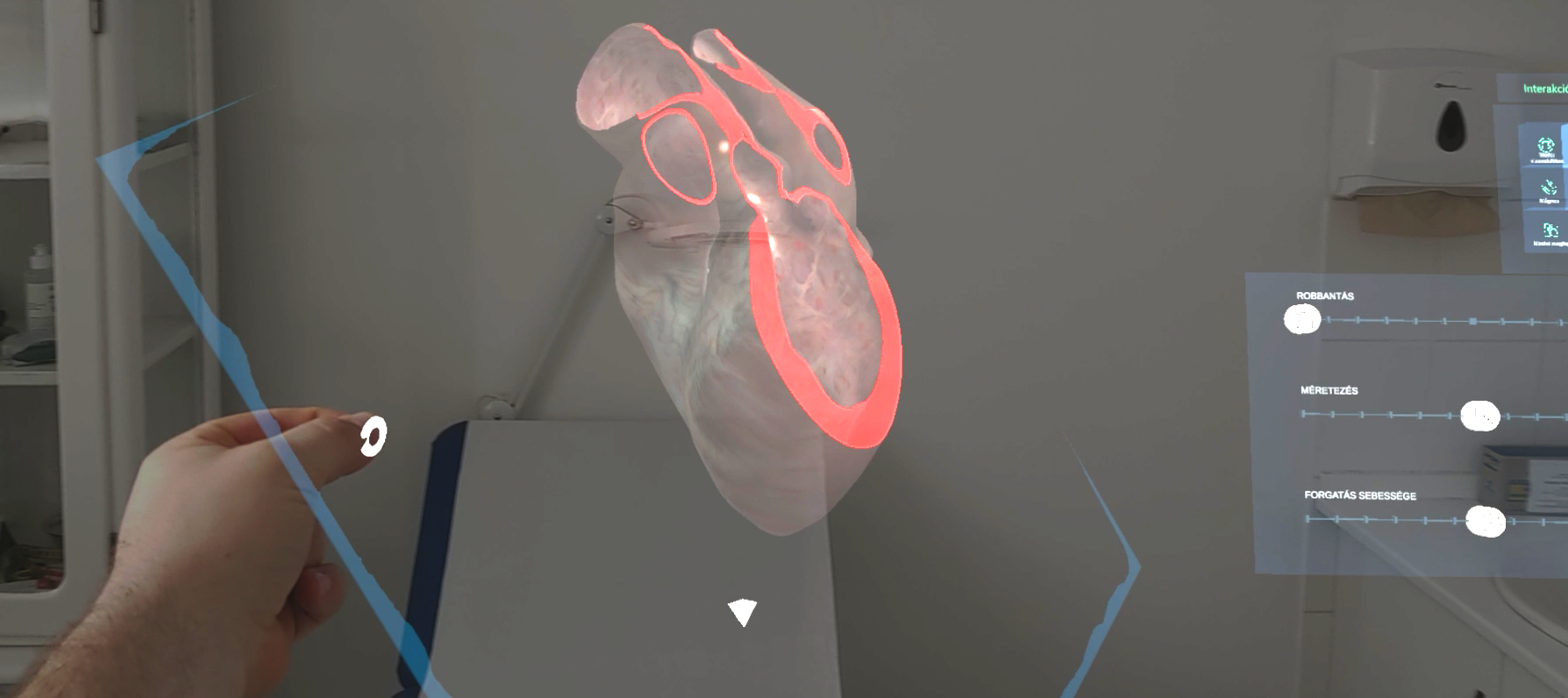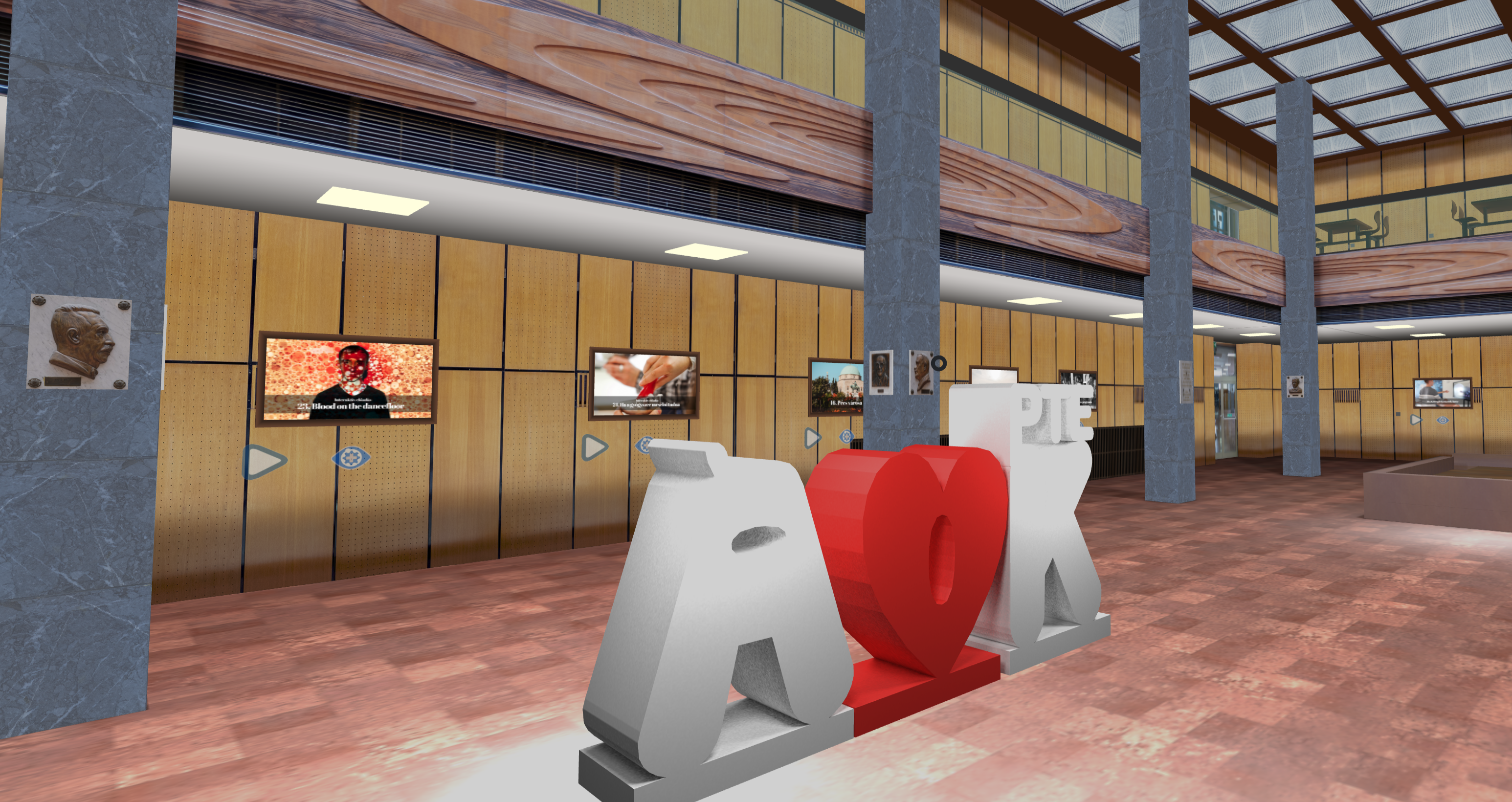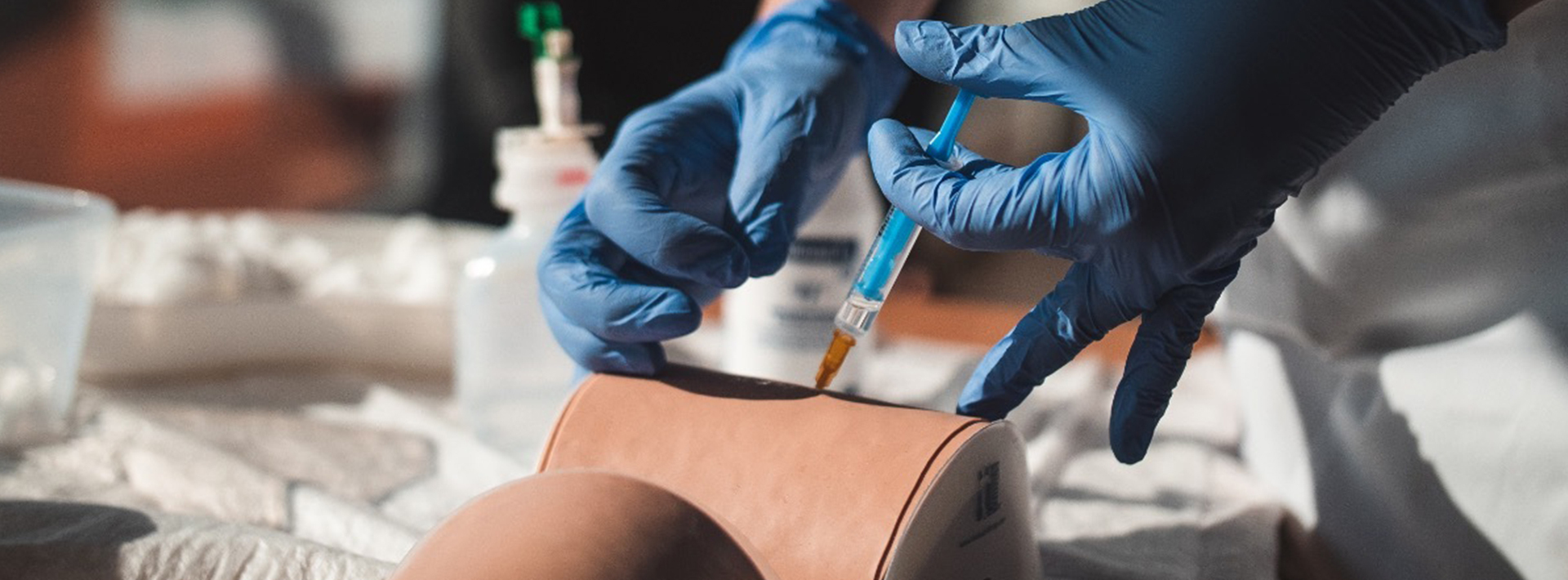Augmented (AR) and virtual reality (VR)

Operating under PTE3D, the priority goals of the Virtual and Augmented Reality research Group are the forward looking implementation of visualisation and interactive technologies that underwent a booming development in the past decade; increasing the efficacy and further developing of already used methods; and ensuring the continuity of the thematic excellence founded and expected by the University. Our developer group is experienced in education, medical, biomedical, 3D modelling, graphical and general design fields; in cooperation with several other University units, they are researching the installability of available VR, AR and XR opportunities, precisely adhering to user needs and modernising education with up-to-date solutions.
The VR laboratory hosted by the Medical School’s Medical Skills Education and Innovation Centre is outstanding in technical equipment on the European level, provided by the locally developed VR and AR frameworks and applications. Our developments include a study material creator and education platform that can be used in both AR and VR, able to serve multiple users simultaneously. It covers the transfer of knowledge throughout the entire course: the materials of lectures are downloadable and editable, the lectures and exams can be held with AR or VR tools. If sufficient literature or validated experience is not available, we support the efficacy of the proposed development with research, surveys, and a series of experiments, during which we can also count on the cooperation of researchers from the Department of Behavioural Sciences and the Biomechanical Laboratory. Our targeted tools include a haptic glove, VR treadmill, Hololens, PC-based and independently functional VR glasses and locally developed, target use intended peripheries.

Displaying the sources currently used clinical medical imaging systems in AR and VR environments and making them interactive are an indispensable advantage in surgery planning in showing pathological changes, traumas and fractures. Creating variable models makes the simultaneous cooperation of multiple users possible. With these methods, participants do not restrict each other’s view by their physical presence, and the survey of the operative area and pre-operational simulation of procedures can be done with AR and VR displaying online, even from different cities.
Our plans include the development of system capable of volumetric, point cloud based recording and streaming pf surgery procedures for VR and AR platforms. The advantage of such recordings is that they can be viewed from an arbitrary angle in the 3D area; they van be rotated and walked around, significantly increasing the number of students able to observe the given procedure. The recordings can be used with traditional models, compiled with DiCOM image sources, and can therefore gain an important role in surgery planning and evaluation.

Our activities include the creation of VR presentations and experiences, for which we can fully count on the support of the expertise of the 3D modelling and scanning workgroup, also part of PTE3D. With the help of our building scanners, the surgery rooms, internal and emergency medicine departments of the 400 Bed Clinic became walkable in the VR world, aiding medical course participants and future workers in getting to know the clinical environment.
Based on designs, 3D modelled VR presentations of currently under construction units enable the more specific goals introduction of the buildings. The VR experience of the Bicske blistering plant of the Hungarian Charity Service of the Order of Malta has made the size specific visualisation of future workstation furnishings and design before placing the orders for them.
